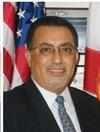Memberships
Institute of Electrical and Electronics Engineers, Miami Section,
Chairperson;
- present
Peer Review Positions
Transactions on Power Systems, Institute of Electrical and Electronics Engineers
Transactions on Energy Conversion, Institute of Electrical and Electronics Engineers
Transactions on Magnetics , Institute of Electrical and Electronics Engineers
Transactions on Energy Delivery, Institute of Electrical and Electronics Engineers
Transactions on Education, Institute of Electrical and Electronics Engineers
Journal of Electromagnetic Waves and Applications
International Journal for Computation and Mathematics in Electrical and Electronic Engineering
Professional Presentations
Asynchronous Learning Networks… Internet Based Educational Systems and the future of education;
TelecomLatina; 1999
Inverse Problems;
COMPUMAG'99;
Technologies
Abstract
Common management systems are deficient in their capacity to manage series-configured energy storage devices.In a series-connected configuration, the extraction of one energy storage element from the stack would typically result in a total loss of the array. ESRU avoids such failures and provides a continuous operation. The ESRU modules, expandable to any chemistry, provide the customer with individual control and charging of each source while still providing a path for the diagnostic techniques to be orchestrated on individual or multiple sources. The system is also capable of providing multiple methods to charge each source independently. The system is modular featuring an extensive voltage and current range that can be applied to a multitude of parallel and series configurations. The technology can be used to seamlessly distribute the stresses on each electrochemical source in the system.The ESRU comprises switches for selectively connecting the system load bus circuit, charging circuit, or a bypass circuit. The system also has an energy storage regulator for enabling the control of one or more ESRUs. A regulator controller may receive sensor or measurement data from the ESRUs connected to the energy storage regulator, and may issue control instructions that control the switches of the individual ESRUs. Measurement data can include, for example, voltage, current, or temperature information relating to a specific ESRU. Benefit
Capable of controlling individual unit within a series or parallel arrayCapability of electrically disconnecting a unit and allowing for maintenance or device replacement without affecting the performance of the entire arrayCharge balancing can be achieved without using costly power electronicsMarket Application
Industrial facilitiesData CenterElectric vehicles (EV) in emergencies to bypass a failed batteryReusing lithium ion batteries for alternative applications after original capacity drops below 80 % and when are unfit for EVsMicrogrids














